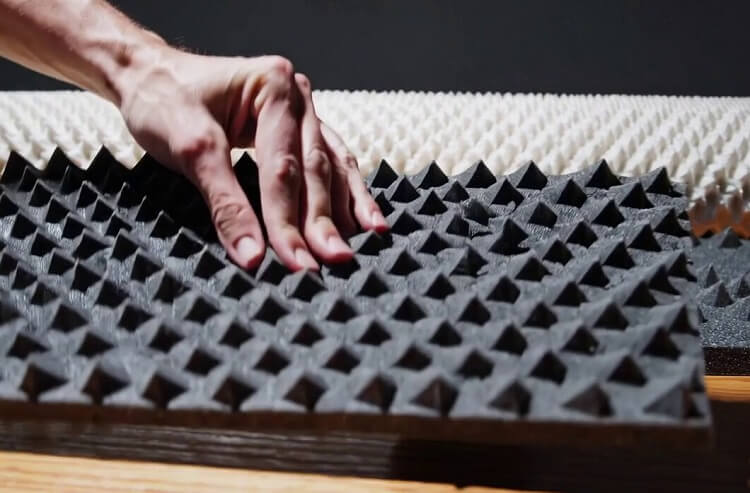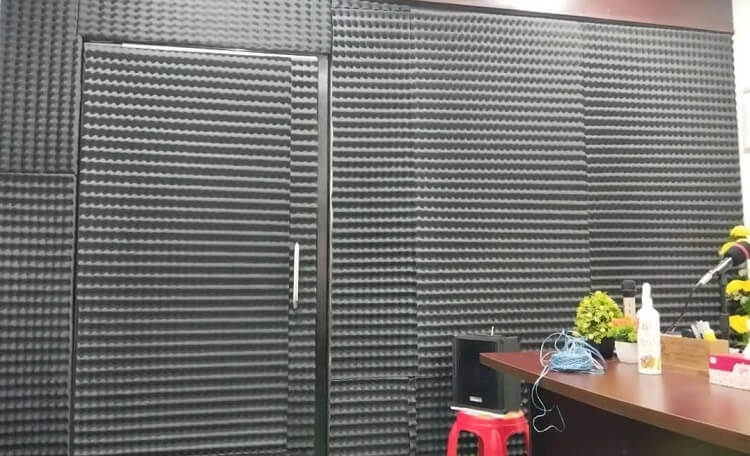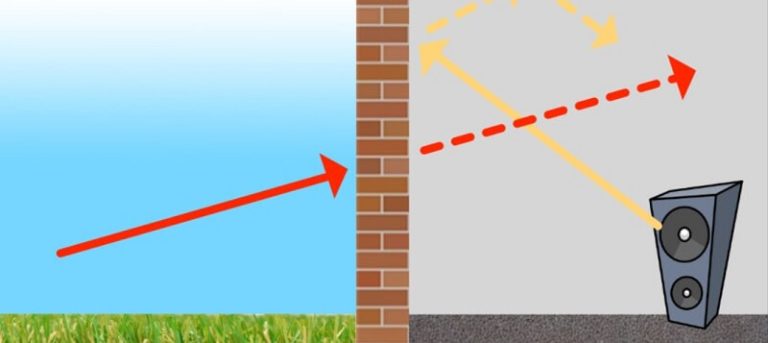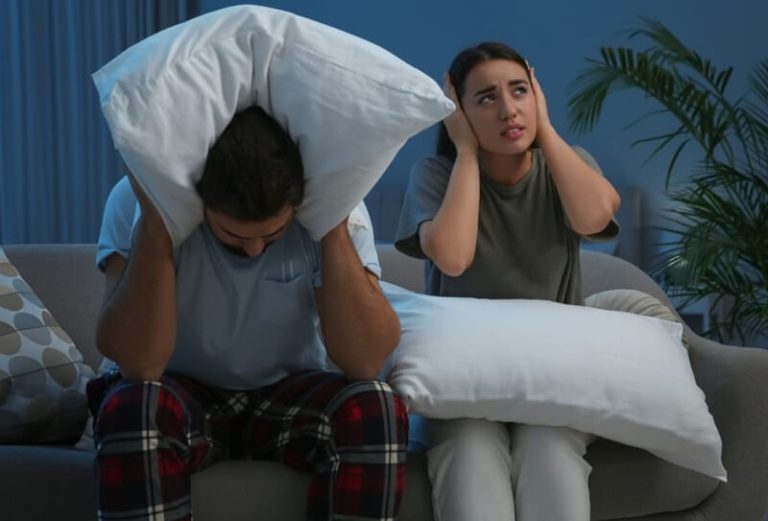
Noise intrusion can significantly disrupt our comfort and productivity, whether at home or in the workplace. Understanding how soundproofing works for walls, doors, and windows is crucial for creating a quieter, more peaceful environment. This article delves into the principles of soundproofing, exploring effective techniques and materials to mitigate noise transmission and improve acoustic comfort.
From reducing street noise to minimizing echoes and enhancing privacy, this guide offers actionable insights to help you achieve a tranquil space.
The Basics of Soundproofing
What is Soundproofing?
Soundproofing involves reducing or eliminating unwanted noise by blocking, absorbing, or dampening sound waves. It addresses both airborne noise (voices, music, traffic) and impact noise (footsteps, vibrations). Effective soundproofing utilizes specialized materials and construction techniques to minimize these intrusions.
How Sound Travels
Sound travels as waves through various mediums, including air, solids, and liquids.
When these waves encounter obstacles like walls, doors, or windows, they can be transmitted, reflected, or absorbed. The effectiveness of soundproofing relies on interrupting this process. Dense materials block sound, flexible materials dampen vibrations, and porous materials absorb sound energy, reducing reverberations and echoes.
Key Principles of Soundproofing
- Mass: Heavier, denser materials are more effective at blocking sound transmission.
The greater the mass, the more energy is required for sound waves to penetrate.
- Damping: Damping materials dissipate sound energy by converting it into heat through internal friction. This is particularly effective at reducing vibrations and resonances within structures.
- Decoupling: Separating structural elements, such as wall layers or ceiling joists, prevents sound vibrations from traveling directly through the building frame. This breaks the pathway of sound transmission.
- Absorption: Soft, porous materials absorb sound waves, reducing reflections and echoes within a space.
This is particularly important for improving speech clarity and reducing reverberation time in rooms.
Soundproofing Walls
Techniques for Walls
Effective wall soundproofing often involves a combination of techniques:
- Adding Mass: Installing Mass Loaded Vinyl (MLV)—a dense, flexible material—significantly increases a wall’s sound-blocking capabilities. Doubling up drywall layers also adds mass and further improves sound insulation. Specialised soundproof drywall, featuring multiple layers and damping compounds, offers even greater noise reduction.
- Filling Cavities: Filling wall cavities with dense, absorptive insulation like mineral wool or fiberglass helps dampen sound waves and reduces their transmission.
Spray foam insulation offers a comprehensive seal and further minimizes air gaps, preventing sound leakage.
- Decoupling Structures: Using resilient channels or sound isolation clips creates an air gap between the drywall and the wall studs. This decoupling breaks the vibration pathway, minimizing sound transmission through the wall structure. Staggered stud walls, where the studs on each side of the wall are not aligned, offer even more effective decoupling.
Common Challenges and Solutions
Thin Walls: Thin walls are notorious for poor sound insulation.
Addressing this requires adding mass through MLV, additional drywall, or specialized sound-dampening drywall.
Gaps and Cracks: Even small gaps and cracks can significantly compromise soundproofing efforts. Seal all penetrations—around pipes, electrical outlets, and switches—with acoustic caulk.
Ensure a tight seal around the perimeter of the wall where it meets the floor, ceiling, and adjacent walls.
Flanking Noise: Sound can bypass walls through flanking paths like ceilings, floors, and shared ductwork. Addressing flanking noise may require treating these adjacent structures with soundproofing materials.
Soundproofing Doors
Why Doors Are a Weak Point
Doors, especially hollow-core interior doors, are often a weak point in soundproofing due to their lightweight construction and gaps around the frame. These gaps allow sound leakage, compromising the effectiveness of wall soundproofing.
Effective Door Soundproofing Methods
- Upgrade to Solid-Core Doors: Replacing hollow-core doors with solid-core or solid wood doors significantly improves sound blocking due to their increased mass and density.
Specialized acoustic doors, with internal damping layers and seals, provide even greater noise reduction.
- Seal Gaps: Installing weatherstripping around the door frame and a door sweep at the bottom seals air gaps, significantly reducing sound leakage. Automatic door bottoms, which drop a seal when the door is closed, offer a more comprehensive seal.
- Add Mass or Layers: Applying MLV or specialized sound-dampening materials to the door surface adds mass and further improves sound blocking. Acoustic panels can be added for both sound absorption and aesthetic appeal.
Budget-Friendly Door Solutions
For more budget-conscious approaches, adhesive-backed foam seals, draft stoppers, or heavy blankets can provide temporary improvements in sound insulation.
Soundproofing Windows
How Windows Transmit Noise
Standard single-pane windows offer minimal sound insulation due to the thin glass and air gaps around the frame.
Glass transmits sound readily, especially higher frequencies.
Techniques for Window Soundproofing
- Install Double or Triple Glazing: Double or triple-glazed windows, featuring multiple panes of glass separated by air or gas-filled spaces, significantly reduce noise transmission. The wider the air gap and the denser the gas fill, the better the sound insulation. Laminated glass, with a layer of damping material between two panes, provides even better sound blocking, especially for lower frequencies.
- Use Soundproof Inserts: Window inserts are secondary windows installed within the existing frame.
They add an extra layer of glass and an air gap, significantly improving soundproofing without requiring full window replacement.
- Add Soundproof Curtains: Heavy, dense curtains made of sound-absorbing materials can noticeably reduce noise transmission. These curtains are particularly effective at higher frequencies and also help block light.
- Seal Gaps: Similar to doors, sealing gaps around window frames with acoustic caulk prevents sound leakage. Ensure a tight seal around the perimeter of the window frame.
Cost vs. Effectiveness
While double or triple glazing provides the best long-term soundproofing, window inserts and soundproof curtains offer more affordable solutions with noticeable noise reduction.
Materials Used in Soundproofing
Mass Loaded Vinyl (MLV):
A highly dense, flexible material effective at blocking sound transmission in walls, doors, and even floors. It comes in various thicknesses and can be applied directly to surfaces or incorporated into composite materials.
Acoustic Panels:
Designed to absorb sound energy, reducing echoes and reverberation within a room. They come in various sizes, shapes, and materials and can be mounted on walls or ceilings.
Fiberglass Insulation:
A common insulation material that also provides some sound dampening by absorbing sound energy within wall cavities and floors.
Mineral Wool Insulation:
A denser and more effective sound absorber than fiberglass, offering superior soundproofing performance within wall cavities, floors, and ceilings.
Weatherstripping and Door Sweeps:
Essential for sealing gaps around doors and windows to prevent sound leakage.
Available in various materials and profiles to suit different applications.
Soundproof Curtains and Blankets:
Versatile and cost-effective solutions for reducing noise transmission through windows and doors. Look for heavy, densely woven fabrics for best results.
FAQ
What is the best way to soundproof a wall?
The most effective approach involves a combination of techniques: adding mass (MLV, double drywall), filling cavities (mineral wool insulation), and decoupling (resilient channels). Addressing flanking paths is also crucial for comprehensive soundproofing.
Can I soundproof a door without replacing it?
Yes, significant improvements can be achieved by sealing gaps with weatherstripping and a door sweep, and adding mass with MLV or sound-dampening blankets.
Consider replacing a hollow-core door with a solid-core door for optimal results.
How do I stop noise from coming through windows?
Effective solutions include installing double or triple-glazed windows, using soundproof window inserts, or hanging thick, sound-absorbing curtains. Sealing gaps around the window frame is also crucial.
Is professional soundproofing necessary?
While DIY methods can be effective for smaller projects, professional soundproofing is recommended for complex situations, large spaces, or when achieving specific sound transmission class (STC) ratings is required.
How can I determine the effectiveness of different soundproofing methods?
The Sound Transmission Class (STC) rating provides a standardized measure of a material or assembly’s ability to block airborne sound. Higher STC ratings indicate better soundproofing performance.
Consult product specifications or seek professional advice for accurate STC information.
Conclusion
Creating a peaceful and productive environment often hinges on effective soundproofing. By understanding how sound travels and implementing appropriate techniques for walls, doors, and windows, you can significantly reduce noise intrusion. Whether you choose DIY solutions or professional installation, strategically addressing key areas like mass, damping, decoupling, and absorption will contribute to a quieter and more comfortable living or working space.
Remember to consider factors like your budget, the type of noise you’re trying to block, and the specific construction of your walls, doors, and windows when selecting the best soundproofing strategy.






